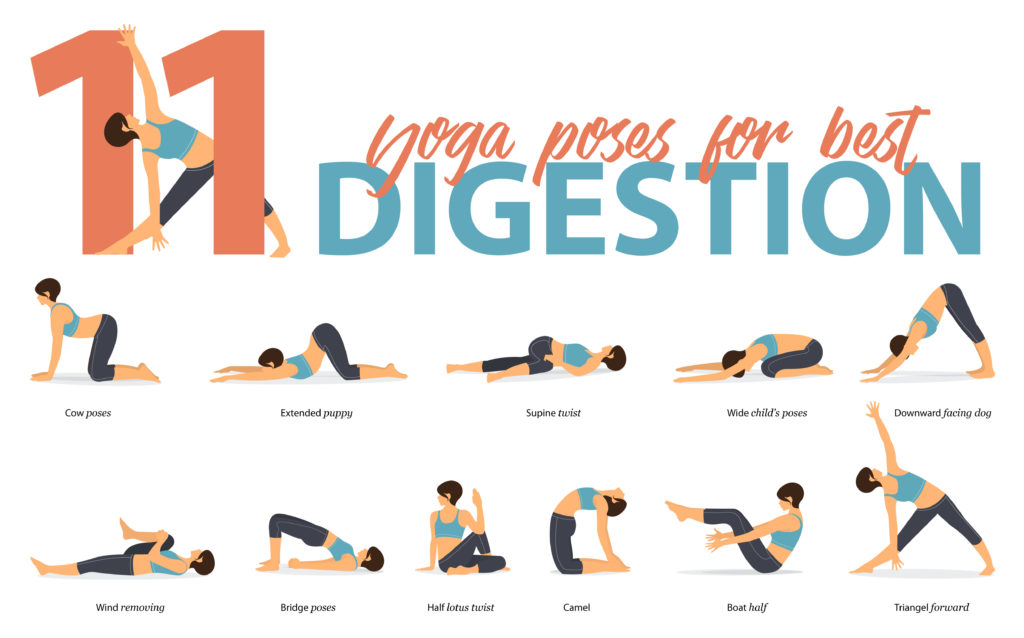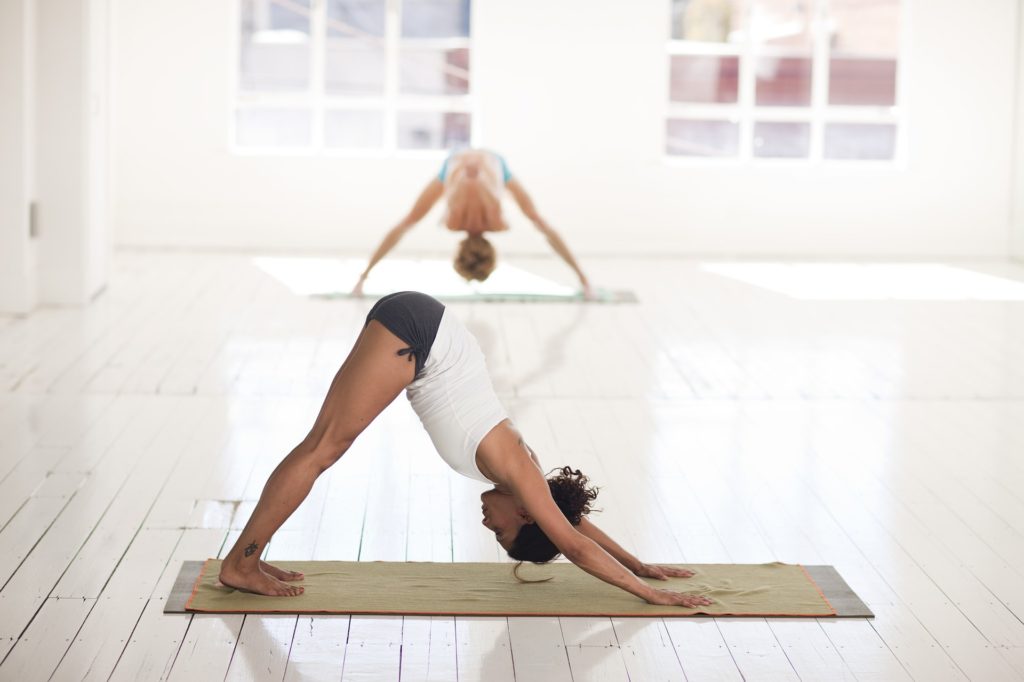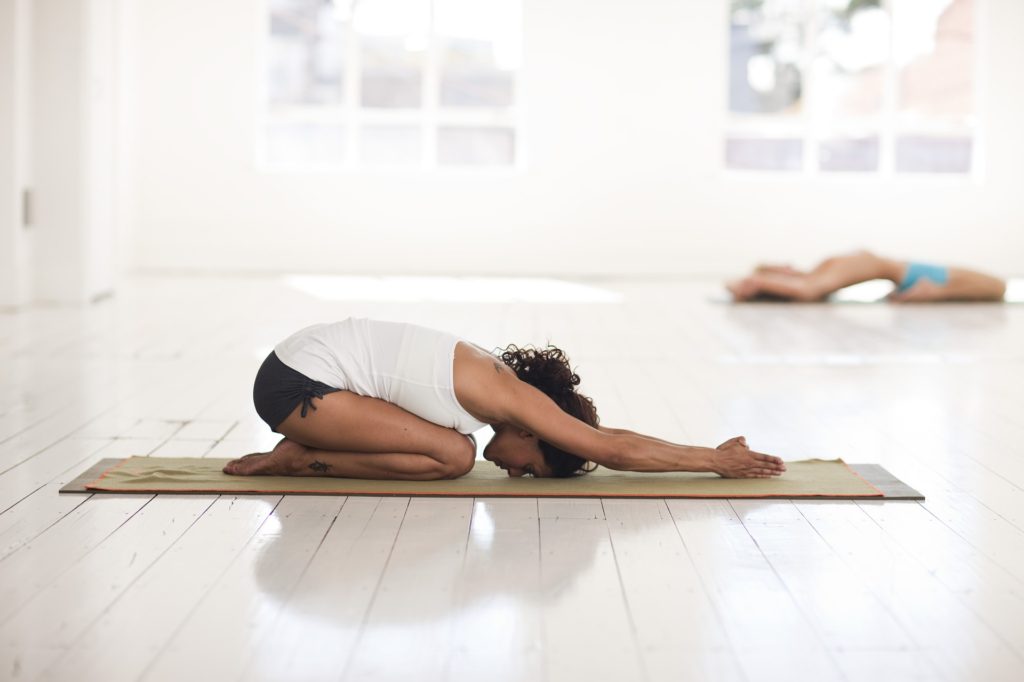Being backed up or bloated is never comfortable. Not only may it leave you feeling not the best it is also a sign that your body is not working as it should, leading to a build-up of toxins, a growth of bad bacteria (dysbiosis) and possible dysfunction of organs. Consuming a wholefoods diet, free of intolerants, processed sugars, and junk food can greatly improve your digestive health. Incorporating yoga into the routine will provide even more help.
Among the numerous health benefits of yoga, one is yoga for digestion. Common stomach problems include constipation, stomach pain, gas, acid reflux, and acidity. Yoga can help you get relief from these conditions. Digestive problems occur due to various causes such as irregular eating habits, allergy to some foods, stress, sedentary lifestyle, bad diet, etc. Read on to learn how yoga for digestion can help you improve your digestive powers.
To keep the body healthy is a duty … otherwise, we cannot keep our mind strong and clear.
Buddha
Good Digestion
You should experience at least one bowel movement a day, If you are eating three meals a day, 2-3 bowel movements are your target. Otherwise, you are going to have a great deal of backed up fecal matter, which will lead to the development of gas, bloating, and possible SIBO overgrowth.
Stress is one of the biggest drivers of constipation. Chronic illness, chronic stress and fatigue all place a great deal of burden on your gut. The gut is, after all, our second brain, when we are not feeling our best, mentally or physically it senses that and will in turn work less effectively. Issues such as IBS, Crohn’s Disease or SIBO place additional pressure on our digestive system. Relaxing and bringing the body back into balance can provide amazing gut relief.
When the body’s sympathetic nervous system is constantly firing (the “fight or flight” response) our digestive system breaks to a halt. Many of us during times of great stress tend to look toward food for comfort, however, if our gut is not properly functioning and there we are just eating, none of it will get digested and instead will sit and rot in our gut, leaving us feeling unwell, bloated and distended. Our “fight or flight” response turns on so we can get away from danger, doing so it shuts off the gut and allows the rest of the body to use up that energy. Our “rest and digest” response is the time to properly enjoy a meal. Asanas aid in turning on the parasympathetic nervous system, our “rest and digest” response, allowing our gut to properly function.
How Yoga Helps
There are many yoga poses that can stimulate the intestines, pancreas, and stomach, making them strong and healthy. Yoga poses can bring about the following improvements:
- Eliminate Constipation problems
- Decrease gas
- Increase production of mucous
- Reduce acid
- Improve absorption of food
- Improve gastrointestinal circulation

Yoga for Digestion
Yoga poses can definitely improve your digestive powers and eliminate stomach problems. But, a few precautions need to be taken when practicing yoga for digestion:
- Perform yoga poses in the early morning on an empty stomach. You may drink some warm lemon water prior to starting your yoga session.
- Do not hurry to do the poses. Be mindful and practice breathing.
- Think positive and visualize that the yoga poses are benefiting your digestive system as your practice.
- Refrain from practicing yoga if you have just had surgery or suffer from appendicitis, peritonitis, hernia or abdominal injuries. Consult a doctor for more advice.
- After your yoga session, relax in Shavasana (corpse pose) for 5-10 minutes.

Yoga Poses for Digestion
The following poses can improve your digestive and excretory system:
Marjaryasana Bitilasana (Cow/Cat Pose)
From a seated position, get onto your knees, hip-distance apart and place your hands firmly onto the floor or your mat, grounding yourself. Have your shoulders positioned beneath your hands. Inhale deeply, bringing your shoulder back, raising your face and gaze upwards to the sky and lift your hips, gently curving your back. Hold and deeply exhale curving your back upwards, dropping your head and gaze downwards and pulling your sitting bone inwards. Repeat 10 times breathing deeply.
This position aids in massaging your organs and bringing fresh blood to your digestive tract, aiding in stimulating peristalsis.

Adho Mukha Svanasana (Downward-Facing Dog)
Begin this pose in a plank, arms shoulders distance apart, feet hip-distance apart, hands and feet grounded. Begin to lift your hips upwards, strengthening your core and letting your head drop (you want a soft chin). Have a slight micro-bend in your knees, gently pull your shoulders away from your ears and lengthen your spine. Remember to breathe in deeply. Close your eyes and concentrate on your breath. Hold this position for between 1-3 minutes.
This asana is a wonderful pose for restoring energy, strengthing and stretching leg muscles as well as feet. It helps reduce stiffness and it calms the mind. By gently stimulating the nervous system it brings about relaxation and awareness. Our nervous system works hand in hand with our digestive system. When we are dealing with a lot of stress, our gut can take a big hit, this is why it is important to not eat when you are feeling very stressed or anxious, as your food will not properly digest, resulting in bloating, distention and gas.
Trikonasana (Triangle Forward Fold or Extended Triangle Pose)
Begin in a standing position, relaxing your neck. Step forward with your right foot, having it point forward. Move your left foot behind you, turning towards the left at a 90-degree angle, your heals should be in line. Turn your trunk towards the left, raising your arms, shoulder level, in line with each other and parallel with your legs. Lift your torso upwards, stretch your shoulders away from your torso, have your palms facing downwards fingers together, ground your feet and breathe deeply several times. With your arms stretched out, begin to pull your right hand and torso toward your right foot. Ground your hand on your mat, leg or a black and move your face and gaze towards your left hand (make sure to maintain the alignment of your arms and shoulders. Breath deeply in this position, and repeat on the opposite side.
This pose is incredibly healing for the digestive system. Apart from toning your muscles and improving flexibility, this asana aids in relieving acid build-up, gastritis, flatulence, and indigestion. It is particularly beneficial for individuals with IBS or those prone to constipation, as it places pressure on the intestinal tract and stimulates peristalsis.
Uttana Shishosana (Extended Puppy Pose)
Begin this asana on all fours. Keeping your feet hip-distance apart, begin to walk your arms out in front of you. Allow your head and chest to rest on the floor, breathe in deeply. Hold this poses for a minute and repeat until you feel ease.
This asana is wonderful for stretching out your stomach and digestive tract, easing stomach cramps, distention, and discomfort particularly after a large meal or prolonged constipation.
Setu Bandha Saravangasana (Bridge Pose)
This inversion begins by you lying flat on your mat. Bend your knees in towards your body, bring your feet in so that they are flat on the ground, hip-distance apart. Tighten your glutes and your core and begin to lift your bottom off the floor, as if your belly button is to touch the ceiling. Hold for ten deep breaths, gently lower down by rolling your spine towards the floor and repeat.
This asana is wonderful for compressing the digestive organs, bringing fresh blood flow to the heart and brain (improving circulation and relaxing the nervous system).
Ardha Pawamuktasana (Wind Removing Pose)
This asana begins with you lying flat on your back, legs extended, with your arms at your sides. Breathe in several times until you have become quite relaxed. On an exhale hug your right knee into your chest, breath in deeply. Press your knee further into your chest and continue to breathe in deeply. Do this for 10 breaths. Release your leg and repeat with your left leg. You may want to repeat this asana several times.
This pose is wonderful for releasing gas from the abdomen. By massaging the intestinal organs and placing pressure on the colon, this asana aid in reducing distention and digestive discomfort. This is a great asana to do before bed.
Supta Matsyendrasana (Supine Twist)
This asana begins with you lying flat on your back, legs extended, with your arms at your sides. After a few deep breaths when you feel relaxed, hug your right knee towards your chest. Place your left hand upon your right knee and extend your right arm to the side of your body. Use your left hand to pull your right knee towards the left side of your body, getting it as close to the floor as you can. Bring your gaze towards your extended right hand. Hold this position for 10 deep breaths, release your knee gently. Repeat with your left leg, on the opposite side.
This asana is perfect to do after Ardha Pawamuktasana, as it provides a deeper release of the digestive tract, relieving discomfort, bloating, distention and digestive cramping. The twisting motion on this pose encourages movement, stimulating motility of waste and toxins, making it a wonderful pose for those suffering from constipation.

Balasana (Wide Child’s Pose)
Begin this asana on all four. With your big toes touching, slowly begin to seat your hips into your heals, spreading your knees out a bit. Walk your hands our in front of you, placing your head and chest on the floor ( you can also rest your head on a block or place a bolster beneath you to support your head and torso in this asana). Breath deeply in this position for 5 minutes, eye closed. Gently rise out of this position, slowly opening your eyes.
Child’s pose is an incredibly relaxing and calming gentle inversion, however, if you are experiencing a great deal of distention or are suffering from diarrhea, it may be uncomfortable as it presses down on the abdomen. As it does compress the digestive organs it does gently massage then and may aid in stimulating peristalsis.
Bharadvajasana (Half Lotus Twist)
Begin this asana in a staff pose, seated on the floor with your legs straight out in front of you, sitting tall. Bend in your right knee, placing your right foot over your left leg. Slowly bring in your left leg, bending at the knee, towards the bottom of your right hip. Twisting your trunk to the right, placing your leg arm against your right knee or thigh to further your stretch, your right arm can be placed behind you for support. Breathe in and lengthen your spine, exhale through your nose. Hold this pose for ten breaths and repeat on the opposite side.
This spinal twist asana is wonderful for stimulating nerve function, massaging abdominal organs and encouraging good digestion.
Ustrasana (Camel Pose)
Begin this backbend asana by kneeling on the floor, keeping knees and feet together, arms at your sides. Breathing deeply, place your hands on your pelvis or your buttocks with your fingers pointing downwards. Pushing your thighs forward begin to gently bend your back, bringing your gaze to the ceiling. Bringing your shoulders back, stretch one arm at a time towards your feet, having your hands grip your heels or ankles. Pressing down on your feet, lift your sternum upwards, allowing your head to gently fall back, but not too much. Spend ten breaths in this pose, gently coming out. This is done by reducing the hold on your feet and slowly raising your torso upwards, slowly lifting your head in the process. As you come up you can place your hands on your pelvis or lower back to provide extra support in coming out of the pose.
The camel pose stretches your abdominal organs, creating more space and motility, making it beneficial for those suffering from constipation, indigestion or bloating.
Ardha Navasana (Half Boat)
Begin this asana by sitting on the floor, back straight and your legs in front of you. Bend your knees in towards your body. Using your hands as support lift your feet off the floor, toes pointed. Keeping your core strong slightly lean back, lifting from the top of your sternum, make sure to keep your back straight. Bring your hands up beside your knees and hold the position for 10 breaths. You can also place your hands behind your thighs for extra support. To exit this position slowly bring your hands to your sides, keeping your core strong, come to an upright position and then release your legs, placing them back on the ground.
The half boat pose is wonderful for strengthening the core, however, it is also a great asana for stimulating the kidneys and intestines. It aids in the elimination of waste and improving digestion as well as relieving stress.

References
Collins, S.M., Surette, M., Bercik, P. (2012). The interplay between the intestinal microbiota and the brain. Nature Reviews Microbiology. Volume 10, Pages 735-742.
Iyengar, B.K.S. (2006). Iyengar yoga for beginners. Dorling Kindersley, London.
Mayer, E.A. (2011). Gut feeling: The emerging biology of gut-brain communication. Nature Reviews Neuroscience. Volume 12. Pages 453-466.
Noor, S., Prasad, K.V.S., Krishnababu, G. (2015). Yoga – Its awareness and benefits on Health. Journal of Evolution of Medical and Dental Sciences. Volume 4, issue 36, pages 6248-6256.
Stephens, I. (2017). Medical Yoga Therapy. Children’s. Volume 4, Issue 2, pages 12.
Amanda Filipowicz is a certified nutritional practitioner (CNP) with a bachelor in environmental studies (BES) from York University. She also has certification in clinical detoxification, prenatal and postnatal care as well as nutrition for mental health. She has been working as a nutritionist since 2013 and is a lifelong proponent of eating healthy.

